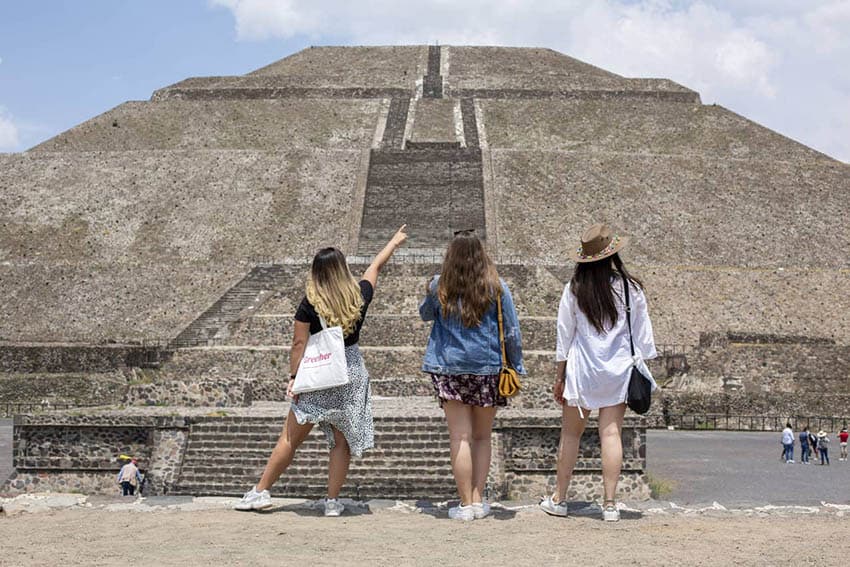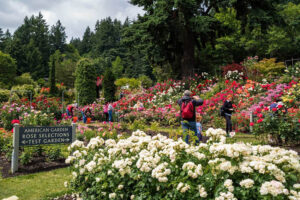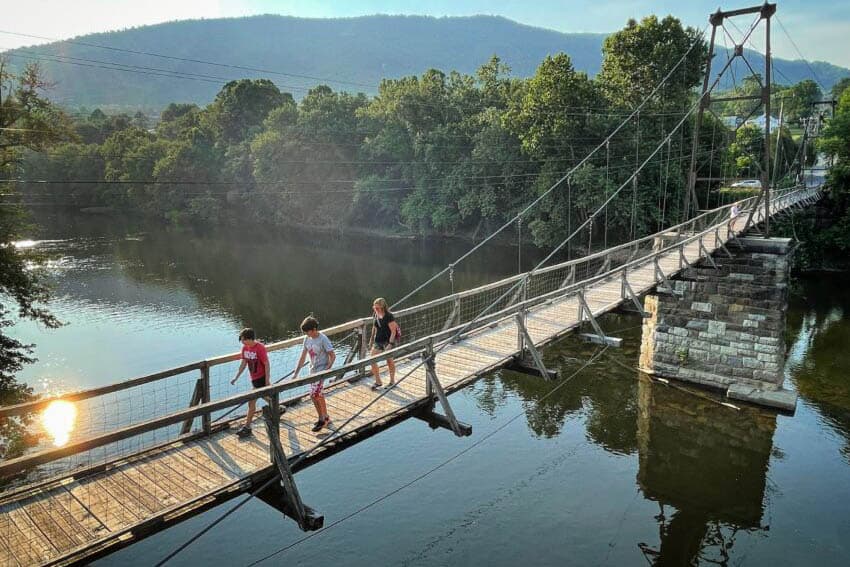
Siwa- Mystical Oasis in Egypt Where Few Dare to Go
By Sky “Sama’a” Sutton

“We’re here to see and be seen, “ said my travel companion, Nicole.” She was correct. As a pair of single American women in Egypt, we were aware that we are ambassadors for our kind: the fiercely independent female traveler.
Our mission on this trip was to reach and explore the isolated oasis of Siwa.

Many people insisted we would need a guide, a translator, at the very least, a man to keep us safe. They were all wrong. We traveled freely. We were welcomed and shown respect everywhere we went. There wasn’t a moment that we felt unsafe.
Scary Parts?
After the trip, I was asked what the most frightening thing on this trip was. I thought about the language barriers, traffic, and military checkpoints, and I answered: “Nicole. When a cabbie tried to rip her off on the price of a ride.”
Before one can explore Siwa one must get there. This is not easy. The options are car, bus, or plane. The bus schedule is sketchy. The private car is pricey.
The planes rarely fly. We choose to take an overnight bus ($12 USD) from the West and Middle Delta bus station in Cairo and to hire a car and driver ($160 USD) for the ride back.
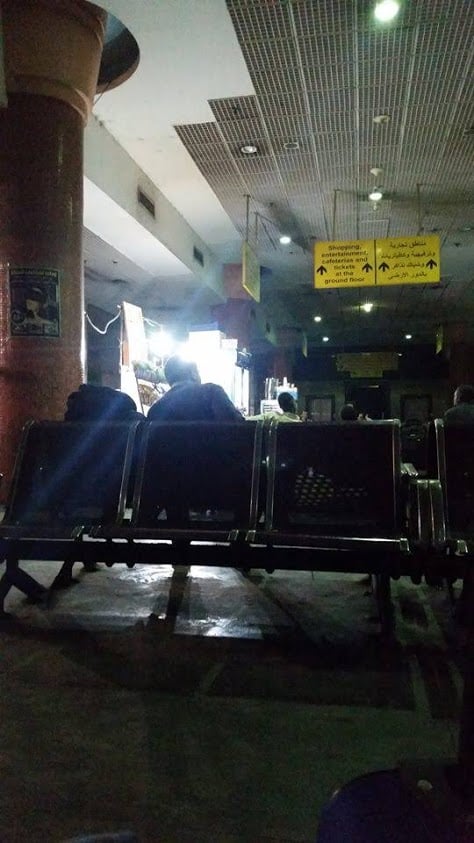
Do not trust bus information that you find online. Go to the bus station and talk to a person. Buy your ticket well in advance.
A Long, Arduous Bus Ride
It’s an arduous ride. The average travel time on the road between Cairo and Siwa via Marsa Matruh is 9-12 hours. Using naps to combat the monotony we endured the journeys. We felt perfectly safe in both directions.
There’s no bathroom on the bus. I’d been warned about this. This caused me great concern. I avoided fluids before and during the ride. Every few hours I took a few drops of electrolyte formula on my tongue. It seemed to help.
There were only four stops along the way–mostly at roadside truck stops. For the bathrooms, one needs one’s own toilet paper, hand sanitizer, baksheesh for the attendant (3-5 LE/.17-.28 USD) and possibly a flashlight.
TIP! Travel during the Day
Important: try to travel the road from Marsa Matruh to Siwa during daylight hours. It’s common practice for night drivers to drive without headlights, either because they’re trying to avoid road bandits or they’re smugglers. This dark driving results in deadly head-on collisions that take lives on a regular basis.
Egypt is Watching
There are military checkpoints here and there. These are nothing to be worried about. Have your passport in your hand in case they ask for it. Answer all questions. Be on your way.
Be aware that Egypt is watching you. It isn’t only the checkpoints. The safety of tourists is taken very seriously. I noticed three kinds of authority: military, regular police, and tourist police.
TIP! The tourist police are there to help you. If anything happens, report it to them. Look for officers wearing police uniforms and a patch that reads: “Tourism and Antiquities Police.” They can be found in all the popular tourist areas.
TIP! Do not take pictures of ANYTHING that looks even slightly military-related. I don’t care how cool that gun looks: put your camera away.

Even the locals will note your movements. It’s not so bad. Example: one evening in Siwa, Nicole and I stayed in the car while our friend, a local man we call “Volare”, got us fruit from the stand near our hotel.
“She likes these,” the vendor told Volare, pointing a particular kind of fruit, “She bought them before.” He was right.
An Inquiring Voice
On another evening, drinking juice at a small farm, the phone rang in the pocket of our host. Our host is staff at the hotel we were staying in. He walked us into town and was showing us around. The voice on the other end of the phone was the hotel asking if we were still with him.
The hotel knew we were traveling without mobile phones. We did this trip old school without any “electric leashes”. They had a message for us from Volare. Seeing Volare reach us using an old-fashioned phone chain was both startling and comforting at the same time.
The Oasis
The road to Siwa from Marsa Matruh is a featureless black ribbon that crawls across the desert for hours, hangs on a ridge for a moment then drops down into a vast bowl of dark green palm trees.
Siwa is old. No one knows exactly how old. Researching her history will send one down a rabbit’s hole of myths and legends. Some historians believe that the oasis came into being during prehistoric times. Hominid footprints discovered in the oasis in 2007 could be 2-3 million years old.
Palm Land
She’s had many names including Sekht-am (“Palm Land”), Oasis of Jupiter-Amun, Marmaricus Hammon, and Santariyyah. She’s seen her people worship many gods and heard them speak many languages. She’s old enough to remember Libyans, Greeks, Romans, and Egyptians arriving. She can recall the sound of Alexander the Great addressing his soldiers during his famous visit in 331 BC.
She’s felt the sting of invasion more than once. Sometimes her people were victorious, other times they were bested. She survived both World Wars. She’s still very much alive today.
Siwa isn’t really Egypt. Siwa is her own.
Cabbies Found Us
“You need taxi?”

We hardly had time to pull our bags from under the bus before the cabbies found us. We learned quickly that getting around wouldn’t be a problem. There are taxis, tuk-tuks, and bicycles for rent everywhere. All reasonably priced. There’s even a donkey cart for hire.
Shali Fortress
It’s a short ride from the bus station to our hotel. There’s the police station, a tourist center, some shops, and a mosque. Then we saw the ruins of Shali Fortress towering over the town. The ruins look like a coffee ice-cream castle that’s melted in the sun. These are the beautiful remains of a horrendous tragedy.
In 1926 a torrential rainstorm washed away the old Shali fortress. Built from bricks made of salt mud called kershif, this high fortress could defend against centuries of invaders but it could not fight torrents of water. Its fractured face looks directly down onto the busy town square. People no longer live within its walls but Shali remains a part of the evolving daily life of the oasis.
Hotels in Siwa
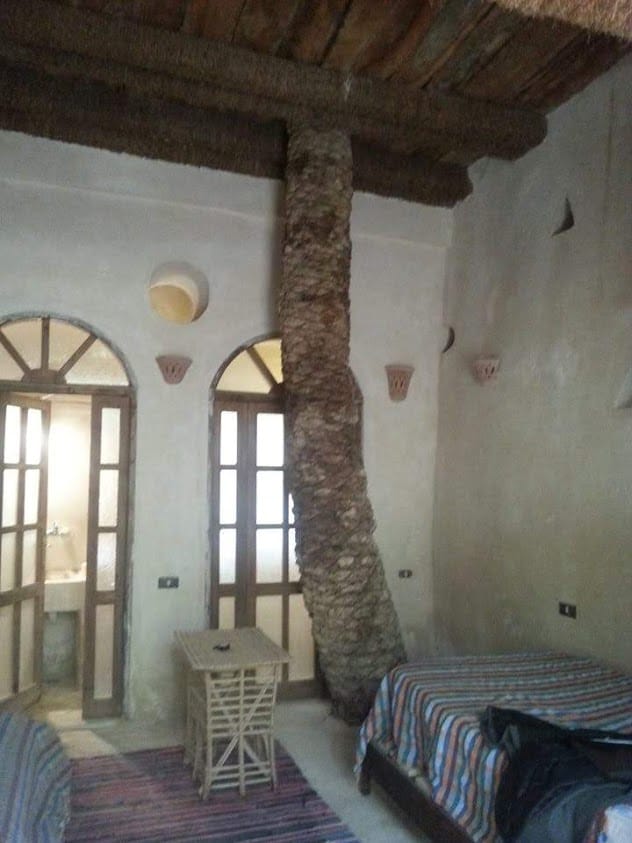
There are about two-dozen hotels in and around Siwa. They range in price from $19 USD per night for two people up to $600+ USD. We stay in four hotels during our visit. Each is beautiful and unique.
Where Are the Shower Curtains?
Note of interest: Egyptian hotel rooms are almost exactly like other hotel rooms except for one thing: no shower curtains. Why? I have no idea. It felt weird at first and then I stop noticing.
The Albabinshal Heritage Hotel ($26 USD) in the center of Siwa is built right into the side of the Shali fortress ruins. It’s constructed of the same materials as the ruins and in roughly the same shape.
It’s like staying in a hotel drawn by Dr. Seuss. The comfortable rooms there are a perfect landing zone after a long trip.
Close to town is the Galiet Ecolodge ($35 USD). Inside the walls of this charming ecolodge are lush gardens, wandering white paths, and a peridot green spring-fed swimming pool.
Mother Nature is queen here- so much so that some of the rooms are built around live palm trees. How often have you had the giant trunk of a live tree growing through your room?
About a half an hour by car, on the western shore of Lake Siwa, are the Taziry ($175 USD) and the Adrere Amellal (starting at $600 USD). Both are ecolodges.
There is no electricity. There is no wifi. There is peace, quiet and candlelight.

Checking Into Taziry
Our check-in at the lovely Taziry was during mid-day. The sun was baking us. Nicole dropped her bag and grabbed her swimsuit. I grabbed the glass of fresh lemonade provided by the hotel.
“This water is ethereal!” she said from the center of an elegant circular, spring-fed pool.
“Looks it!” I answered from my dry seat in the shade.
The whole area is camera-candy. We walked the grounds taking pictures of the little caves in the mountain, the various buildings that make up the hotel compound and of the stunning view of the lake.
At night the paths are torch-lit and the rooms candle-lit. It’s all very easy on the eyes. We had midnight tea beside the pool.
The gracious staff lit torches around our seats and brought us tea with a wonderful dessert, a sort of orange/guava pudding served in a hollowed-out orange. As with many foods abroad: I’m not sure what it was but I liked it.
The Adrere Amellal Hotel: The Best!
The Adrere Amellalis my favorite hotel in the world. One does not walk at the Adrere. One floats. This place is the stuff fairy tales are made of. This is the sand castle to end all sand castles.
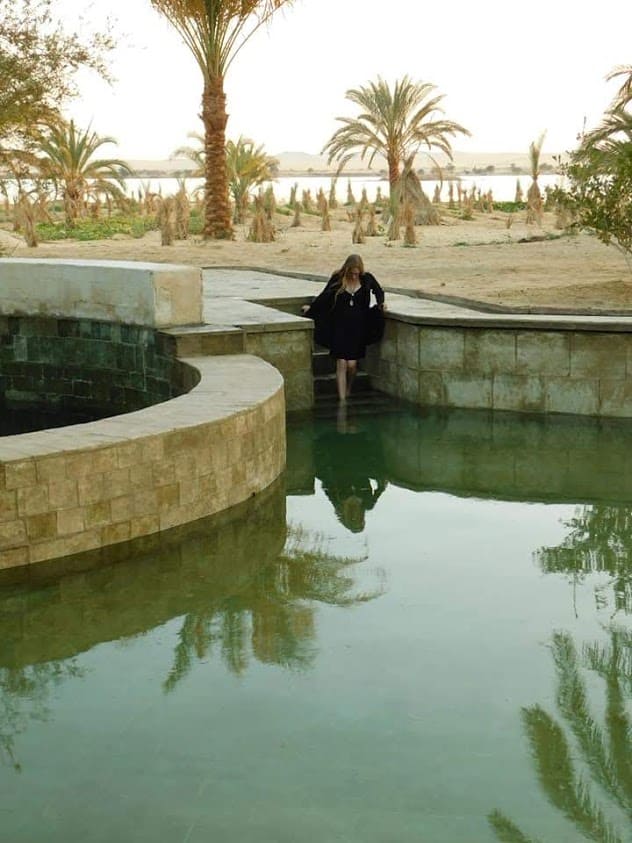
There’s no room key because there are no locks on the doors here. Each room is unique. Some rooms have no roof. Some, like ours, have a porch that doubles as a bedroom. Mine was the bed on the porch. At night there are hundreds of lamps and candles. I couldn’t go to sleep because it was too beautiful!
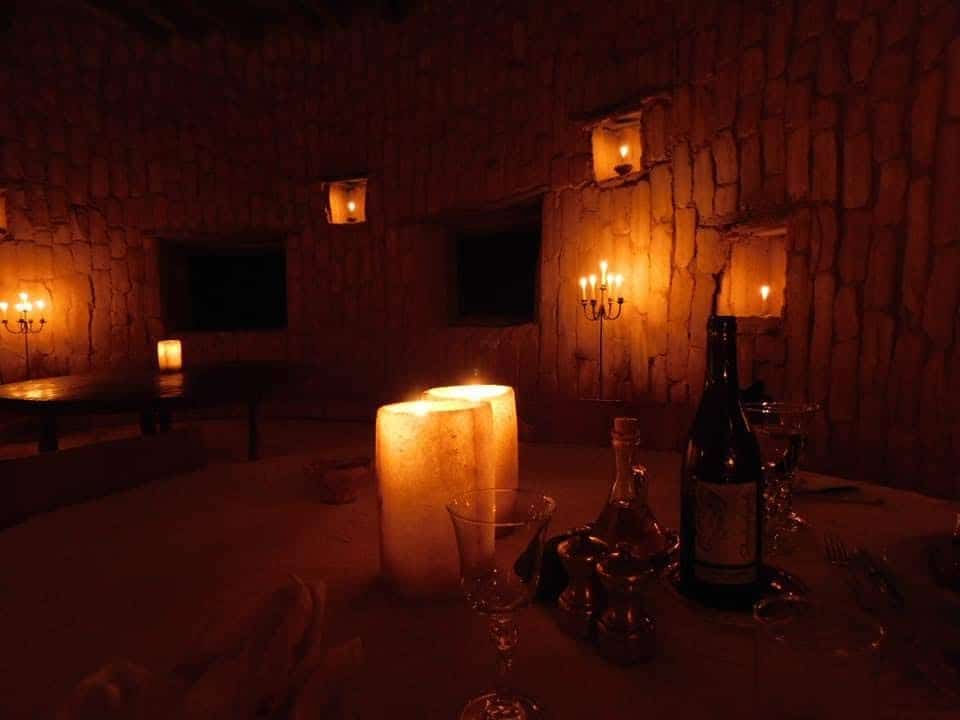
The staff is elegant. The food divine. The very private grounds are a trifecta of beauty with the blue lake, white mountain, and golden sands. They’re a superfecta if one includes the otherworldly hotel itself.
Meeting the Creator
I had the honor of meeting Dr. Mounir Neamatalla, the creator of the Adrere. When an elegant man in a pith hat and small round glasses appeared on the patio at breakfast I felt like I’m was in an episode of Masterpiece Theater.
He asked where I’m from. I told him I live in Northampton, Massachusetts, USA.
“Ah, yes, I know Northampton. I was once married to a Mount Holyoke woman,” Dr. Mounir told me.
Hearing someone say they know of Northampton and Mount Holyoke in such a far-off and dramatic setting was an unexpected delight.
While traveling, many people ask where we’re from. Most often I tell them the truth but if I feel, for any reason, like sidestepping the question I give a vague or cheeky answer.
In Siwa, I told a couple of people that I’m from Jaafar, a tiny town inside the oasis.
Food in Siwa

Nicole is a meat-eater. I’m mostly vegetarian. We found only one problem with the food in Siwa: a complete lack of cheddar cheese. We endured this hardship by leaning heavily on the pizza (40-60 LE/ 2.23-3.35USD) at Abdu’s restaurant and the Ana Marie restaurant, both in the center of town.
We tried delicious sugar cane juice. It comes in a clear plastic bag with a straw taped down into it. I nibbled on bread baked by the side of the road, (1 LE- .06 USD). These pocket breads are so poofy I call them “air calzones.”
There are bakeries, fruit stands, and corner stores. There are restaurants and teashops. If you’re hungry there’s something to eat.
Most mornings we had breakfast in our hotel. Egyptian breakfasts are a fine way to start the day: an omelet (hard-boiled egg), falafel, soft cheese, jam, bread, yogurt, fruit, and tea. Tea is most often served with sugar and a sprig of mint. Coffee (usually instant) may cost extra (15 LE/ .84 USD). TIP! If you’re a big coffee drinker bring a stash of instant coffee packets.
People may give you dried pumpkin seeds as a friendly snacking gesture. Apple isn’t a fan of the seeds so she covertly slipped them into the pile in my hand. I was always happy to eat both our shares.
The Living Siwa
During the day the town is quiet. Our exposure to the mid-day sun was limited to finding someplace to have lunch and watch the people. This is when we saw the Siwi women.
Seeing the Amazing Siwi women in their long black garb inspired complex feelings. As uncovered, free-to-move-about women we couldn’t help but be fascinated by these fully covered, mostly homebound women.
They passed us in the back of tuk-tuks or riding on donkey carts. Never once was there a casual chance to introduce ourselves or ask about their lives. I’d show you a picture of them but I feel sheepish and rude if I turned my camera their way so there are no photos.
Alive at Sunset
Siwa comes alive around sunset. The town square area is the place to be. The shops and restaurants, the street traffic, the ebb and flow of the mosques are all great for people watching.
You may want to bring a bandana or other face-cover. There’s a vehicle that drives around in the evening spraying mosquito spray through the whole town in great billowing clouds that turn the street white until the cloud dissipates.

You’ll hear the clomping of donkey hooves and the engines of motorcycles. You’ll also hear the native language of Siwa. Almost all of Siwa’s population are Berber. More accurately they are Amazigh.
Their language is a rare one called Siwi. It’s the language spoken at home by most Siwians. Arabic, English and other languages are learned later as a second language. A starter word for you: “aman” means water.
This isn’t a nightclub kind of town so if you want a nightcap it’s BYOB. There’s very little alcohol in Siwa unless you can find the likker made from the palm tree. I’d tell you what it’s called but they told me while I was drinking it so I forgot. If you’re not used to moonshine it’ll knock you for a loop.
The Siwi Date Festival
Two things produced in Siwa are olive oil and dates. There are so many dates that in recent years Siwa has held an annual Date Festival in November. The festival fills the town with people from far and wide and is an excellent time to feel all energies of Siwa in full swing.
TIP! If you plan on visiting during the festival book your hotel room far in advance. Every room sells out.

Lake Siwa
Lake Siwa is a fascinating salt lake. It’s a gorgeous body of water with healing mud on some of its shores. If you’ve never experienced water that won’t let you sink you’re in for a real treat.
The snow-white salt-encrusted shores are a dream-like place to have tea or watch the sunset. Be sure to wear shoes. The dry salt is sharp.
TIP! If you go swimming try not to shave your legs for a day or two before your dip and cover any cuts you may have with a bandage. Salt stings.
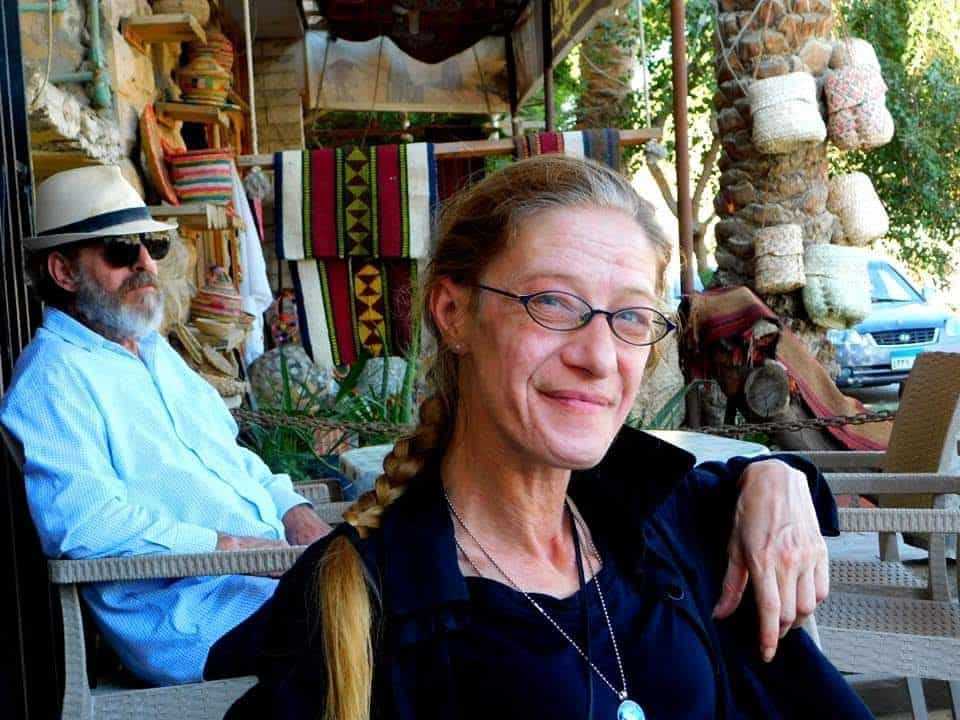
Sky Sutton is an American historian living in western Massachusetts. She is the author of the cult classic book “Daddy Moonshine-The Story of Marvin ‘Popcorn’ Sutton.” Sutton is a spitfire who loves to see the world, collect small spoons and try new desserts.
- These 9 U.S. National Parks Require Reservations in 2024 - April 17, 2024
- Take a Hike in Olympic National Park - April 17, 2024
- The Wild Mississippi: 2340 Miles Across Ten States - April 8, 2024


